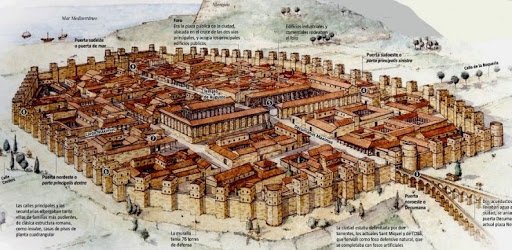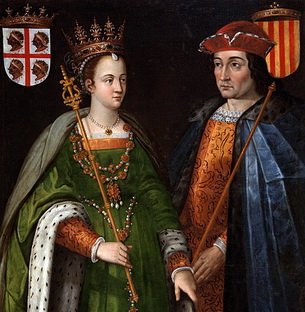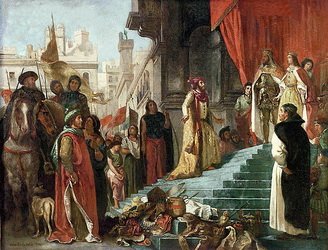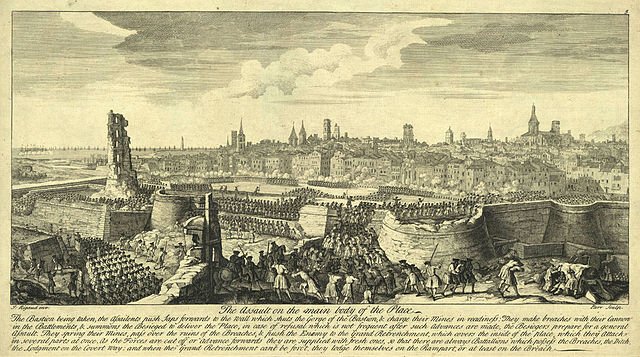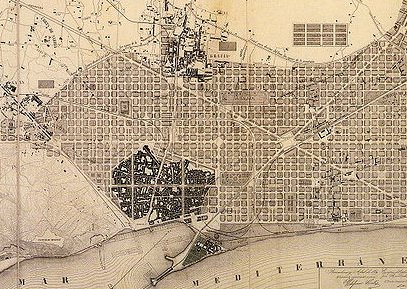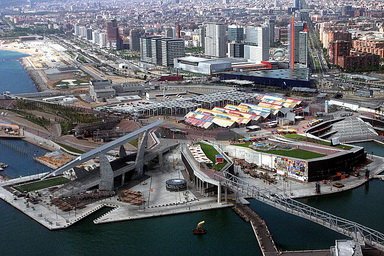Brief History
From Barcino… to the capital of catalonia… and staggering barcelona
W
hy do people love Barcelona? It is like telling why you love your other half. If she were a woman, she would be strong and independent. Centuries of fighting shaped her, gave her the autonomy she yearned for and the unearthly beauty made by Antonio Gaudi.
At the beginning of her existence, around III BC the city belonged to the Romans. Today, not only the straight lines of the old civitas are the proof of that.
It is possible that before their arrival one famous person was in the area. The legend says that Hamilcar Barca, father to the famous Hannibal, and leader of Carthage, founded this place. He may be the reason why the city is named like that… and they say there is a grain of truth in every story.
The prosperity of Roman Barcino didn’t last long. The Visigoths came and the struggles began. It was only in the VIII century that the peace returned. The lands of both sides of the Pyrenees were incorporated into the Kingdom of the Francs.
Barcelona is founded again as a Ciudad Condal (Comtat de Barcelona – county of Barcelona). Louis the Pious, from Carolingian Dynasty, took it from the Moors advancing North. The south of the Frank kingdom started to be called the Spanish Marches. It was a conglomerate of Catalan and Aragon lands, which will be quite noteworthy in the future. The name Ciudad Comtal is sometimes used until this very day.
Upon the breakup of the empire Wilfred the Hairy (Gunfire’d Delos) comes into the spotlight. He unites the counties and sets the foundations for the custom of the inheritance of his throne and power. The dynasty didn’t survive but the tradition – yes.
The comtats were separate entities but they all have the common goal – to shed the yoke of Franks. It soon happened and the marriage alliance between Berenguer of Catalonia and the daughter of the Aragon Kingdom (their photo above) in 1134 was only the beginning of the Golden Age. The seat of the kings was in Barcelona and their kingdom soon included South France, Balearic Islands, Sicily, and South Italy.
With the start of the XIII century, Principat de Catalunya enters a period of prosperity. The economy grows, the society is rich with goods, knowledge, and culture, and the lands were abundant. The Mediterranean Sea was theirs to travel, expand and trade. Tunisia and Algeria brought gold and slaves. Sicily and Sardinia – wheat and salt. Their contacts with Constantinople supplied cotton, spices, and slaves. Barcelona was a rival to Genoa and Florence. Their marine power was truly splendid.
Soon, another marriage united, this time, Catalonia and Castilla. Isabelle married Ferdinand from Aragon in 1469. The legendary pair is said to be fascinated with each other from the first day. Their union gave the beginning to what we now know as Spain.
It was also a time of great successes both military and scientific.
Only one of those was Christopher Columbus who came to the court around 1490. Some historians say he was born in Catalonia. He even has a column in Barcelona, but nothing specific was proven about his origins in the North of Spain.
The discovery of the New World and Spanish prosperity was not really shared by Barcelona. The rivalry between her and Madrid was too great, and the city started to lose its importance. The black death certainly helped and in the XIV century killed half of the citizens.
The Catalonians, not happy with the Castilian rule, started to set one uprising after the other. The first one was in 1641 and lasted 10 years. After this, the city went from one pair of hands to the next, becoming the separatist movements’ headquarter. Later it became a victim of the French attacks.
The autonomic Barcelona ended on one of September’s Tuesdays (11.09.1714 – today it is the public holiday). The French king sitting on the Spanish throne as Philip V the Bourbon, after 14 months’ siege, made the city surrender (photo above – scene from the siege). He then guaranteed the obedience of the locals by a fortress built on top of Montjüic. For a century Barcelona lost its freedoms, the privileges, the Spanish language became official, and the universities were closed. The Catalan culture was hunted, but they didn’t manage to kill it completely.
The XIX century brings change to Europe. The nationalities are born. The city’s economy starts to rejuvenate again. The old rivalries with Barcelona become not profitable for Castilians. Industrialization takes place everywhere. The city is home to the first factory. Catalonia soon becomes the fastest-growing region in Spain. The good wealth management and the powerful, hardworking society help the Catalan culture to be reborn.
The end of the century gives birth to modernism. It is not only a movement in art but in spirit. People yearn to develop and be part of Europe. Pablo Picasso comes here for a moment, not to mention the presence of Antonio Gaudi. It is a time that Sagrada Familia starts to be constructed. Today the church is the ever-growing symbol of the city. New investors and traders find this location profitable, and a lot of projects start – one of them is the construction of the port area.
The urban plan is another great feature of Barcelona. Ildefonso Cerda (photo above shows his idea) created these straight lines and orderly quarters. Some say that he is the father of urban planning. Students of architecture traveling here will have yet another thing to look at (especially in the Eixample district).
At the beginning of the XX century, Barcelona becomes the capital of autonomic Catalonia. It is impossible to think, that soon after, there is a civil war at her doorsteps. The fights happen on the streets and new weapons are tested. These days of May are still remembered today. In 1939 the forces of General Franco sack the city. The autonomy has ended. Economic and cultural repressions are implemented.
It was only after Franco’s death in 1975 that you can observe a turn towards democracy. Catalonia becomes one of the wealthiest regions of Spain again. The industries are blooming, Enric Bernat opens a Chupa Chups factory, and its logo is designed by Salvador Dali.
In the 80s Barcelona hosts the Olympic Games. This gives a new identity to the city. It modernizes and rebuilds, and the old industrial areas are turned into public beaches. You just need to cross the port to get to the golden sands today. The next event is the Cultural Forum. It makes the world believe in the new image of Barcelona. The changes made her more up-to-date, cosmopolitan, and attractive among tourists, and not only! The city is quite popular, prices of the lands rise, and Barcelona becomes one of the most expensive cities in Europe. But is she really as overestimated as they say…?
She is the product of hard work, the stubbornness of the people and the willingness to sacrifice and wait. Come and decide for yourself.
Interesting links:
- development of Catalonia showed on maps
- Development of the Kingdom of Aragon, Catalonia, and Castillia – you tube
- Spanish Civil War – turn the language to auto-translation in settings
- photos sources – link.

